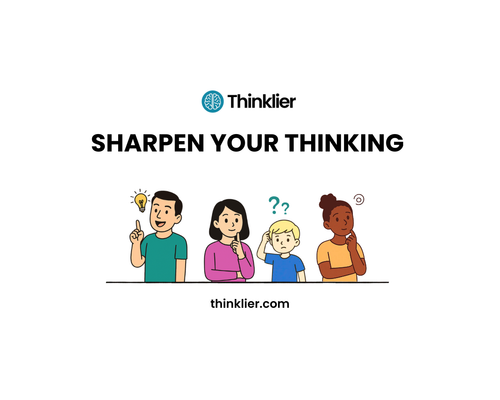Get one fresh, practical idea every 'Thinking Thursday' — plus free access to Thinklier’s toolkits on clear thinking and raising critical thinkers.
Subscribe
In a world obsessed with facts and fast takes, it’s easy to forget that real thinking starts with asking good questions. Here's how to help your child stay curious—and why it matters more than ever.
